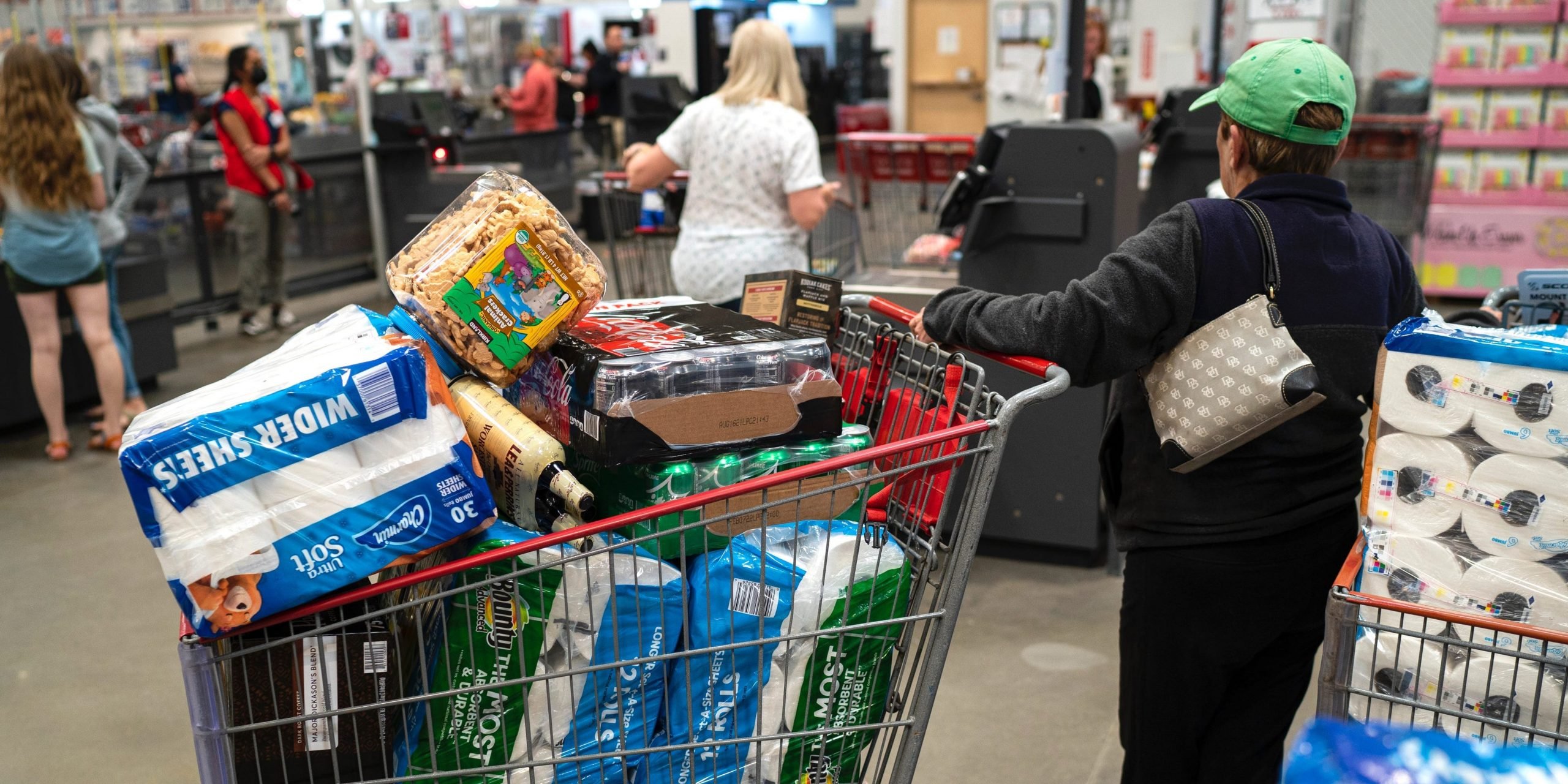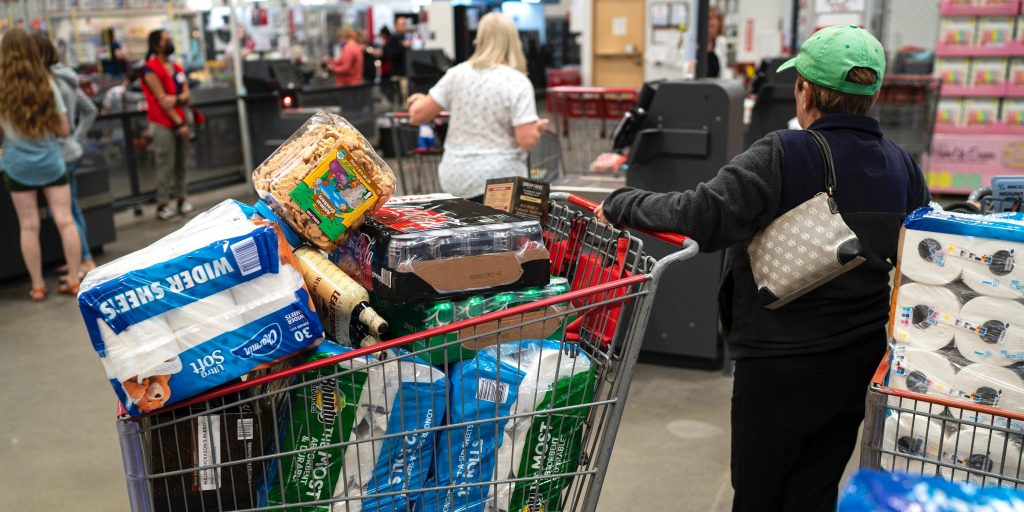
- The PCE price index jumped 0.4% in May as huge demand ran up against supply bottlenecks.
- The print lands below the median estimate of a 0.5% gain and marks a slowdown from April's gain.
- Fed Chair Jerome Powell reiterated last week that he expects inflation to cool as shortages are addressed.
- See more stories on Insider's business page.
Red-hot inflation persisted through May as nationwide supply bottlenecks and extraordinary demand led producers and businesses to lift prices.
The Personal Consumption Expenditures price index – among the country's most popular measures of inflation – rose 0.4% through May, the Commerce Department said Friday. The median estimate from economists surveyed by Bloomberg was for a one-month gain of 0.5%. The jump marks a slowdown from the stronger price growth seen in March and April.
The index rose 3.9% year-over-year, marking the largest one-year jump since August 2008.
Core PCE inflation, which strips out volatile food and energy prices, jumped 0.5% in May, coming in below the median estimate of 0.6%. The gauge gained 3.4% year-over-year. The Federal Reserve uses the core measure as its primary gauge of inflation and has indicated will let inflation run above 2% for some time to facilitate a stronger labor-market recovery.
Inflation broadly accelerated through the spring as the country quickly reopens. While Americans unleashed pent-up savings, bottlenecks throughout the economy left supply struggling to keep up with demand. The imbalance intensified price growth already expected to boom due to the rebound in spending.
The inflation print is the first to follow the Federal Open Market Committee's June meeting. Policymakers elected to hold the benchmark interest rate near zero and maintain the asset purchases of at least $120 billion per month.
The committee's latest set of economic projections took a slightly hawkish turn, with median projections supporting dual interest-rate hikes in 2023. Prior forecasts pushed such hikes into 2024 at the earliest. Members also lifted their median inflation forecasts to reflect stronger-than-expected price growth through 2020.
Still, Fed Chair Jerome Powell cautioned to take the rate-hike forecasts with "a big grain of salt" in a June 16 press conference. The FOMC's projections "are not a great forecaster of future rate moves," he added.
Powell has long argued that the recent bout of decade-high inflation is merely "transitory," and that price growth would cool once reopening-related bottlenecks were addressed. Early signs suggest the central banker is right. Measures of used car inflation - which led all other categories through spring - show price growth slowing sharply in June. And tumbling lumber costs signal home inflation could also be cooling.
President Joe Biden backed the outlook on Thursday, saying prior months' readings aren't likely to precede an inflationary spiral.
"The overwhelming consensus is it's going to pop up a little bit and then come back down," Biden said.
Dit artikel is oorspronkelijk verschenen op z24.nl

